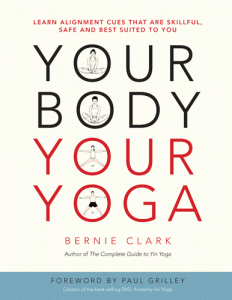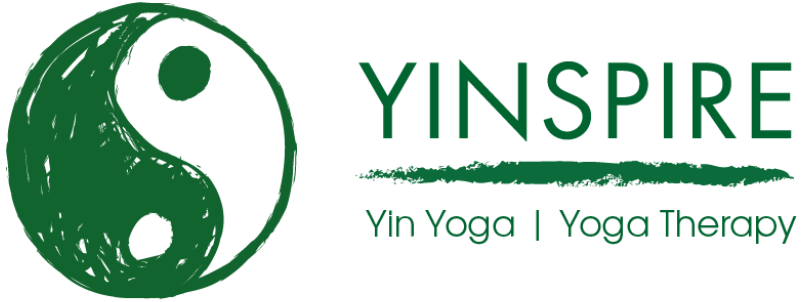 The first thing to say about this book is its no easy read – as well as being the curator of the yinyoga.com website, a well known yoga teacher and trainer, and the author of a classic text about Yin Yoga, Bernie is an anatomist of repute, and this book is a fusion of anatomy and yoga. It’s not a classic anatomy text on how the body works, more how an understanding of functional and experiential anatomy impacts on how we experience our yoga practice, framed in the context of this book as “What stops me?”, as in what stops me from bending forward this far, from taking my leg out to the side, etc.
The first thing to say about this book is its no easy read – as well as being the curator of the yinyoga.com website, a well known yoga teacher and trainer, and the author of a classic text about Yin Yoga, Bernie is an anatomist of repute, and this book is a fusion of anatomy and yoga. It’s not a classic anatomy text on how the body works, more how an understanding of functional and experiential anatomy impacts on how we experience our yoga practice, framed in the context of this book as “What stops me?”, as in what stops me from bending forward this far, from taking my leg out to the side, etc.
The second thing to say is the book is through! Pretty early on I realised it was one to read pacily rather than dwell on each sentence – although the luxury of having studied a fair bit of anatomy meant that I could do this and still learn from the book. The thoroughness is demonstrated by this being volumes 1 and 2 of what will be a 5 volume work, and having got through a general overview of functional anatomy in volume 1, in volume 2 we only get as far as the lower limb – hip to feet.
But in the thoroughness we find a lot of in depth explanation of how we move, and how “normal” is little more than a reference point on the range of human variation. The danger comes of yoga teachers teaching to “normal”, and either coercing their students towards a particular image of how a posture should look in the teachers mind, verbally or physically, or leaving the view with a student that because their bodies experience of a posture differs from “normal” they must be doing it wrong or “bad yogis”. And, yes, I’ve been there – on the mat I’ve had a conversation with a yoga teacher which went like:
YT “Bring your knee over your foot”
Me “It’s actually happy where it is”
YT “You’ll injure yourself”
YT moves on; I’m left wondering how a joint which can take the full force of me running, jumping or hopping, could possibly be injured in a simple static lunge where it’s passively bearing a quarter of my body weight.
I’ve been the other side as well, where I’ve been guilty as a yoga teacher myself of inflicting my view of a posture on students; I try these days to avoid it, but it’s an easy habit to slip into.
On the knee issue, I feel just little vindicated – on page 182 we are treated to an explanation of the measure of force, a Newton, and learn the key ligaments of the knee can take 2100N and the force in a lunge is about 120N. And yes, this is a simplification of grand extremes, but I’m making an illustration – in reality the combination of different components of a knee, the yogis history, and the a nature of the movement all have a part in this.
This is definitely a book for yoga teachers, students of yoga who want to go deeper into the structure of the body and those curious about practical anatomy – it’s no light read, but the richness of its content rewards those who stick with it.
“There is no normal and no abnormal. There is only you in all your uniqueness, and this uniqueness will determine what, of all life’s offerings, is available for you to partake in, and what you should, with wisdom, leave on the plate”
It can be purchased on Amazon, and if you use this link, Yinspire earns a small commission.
